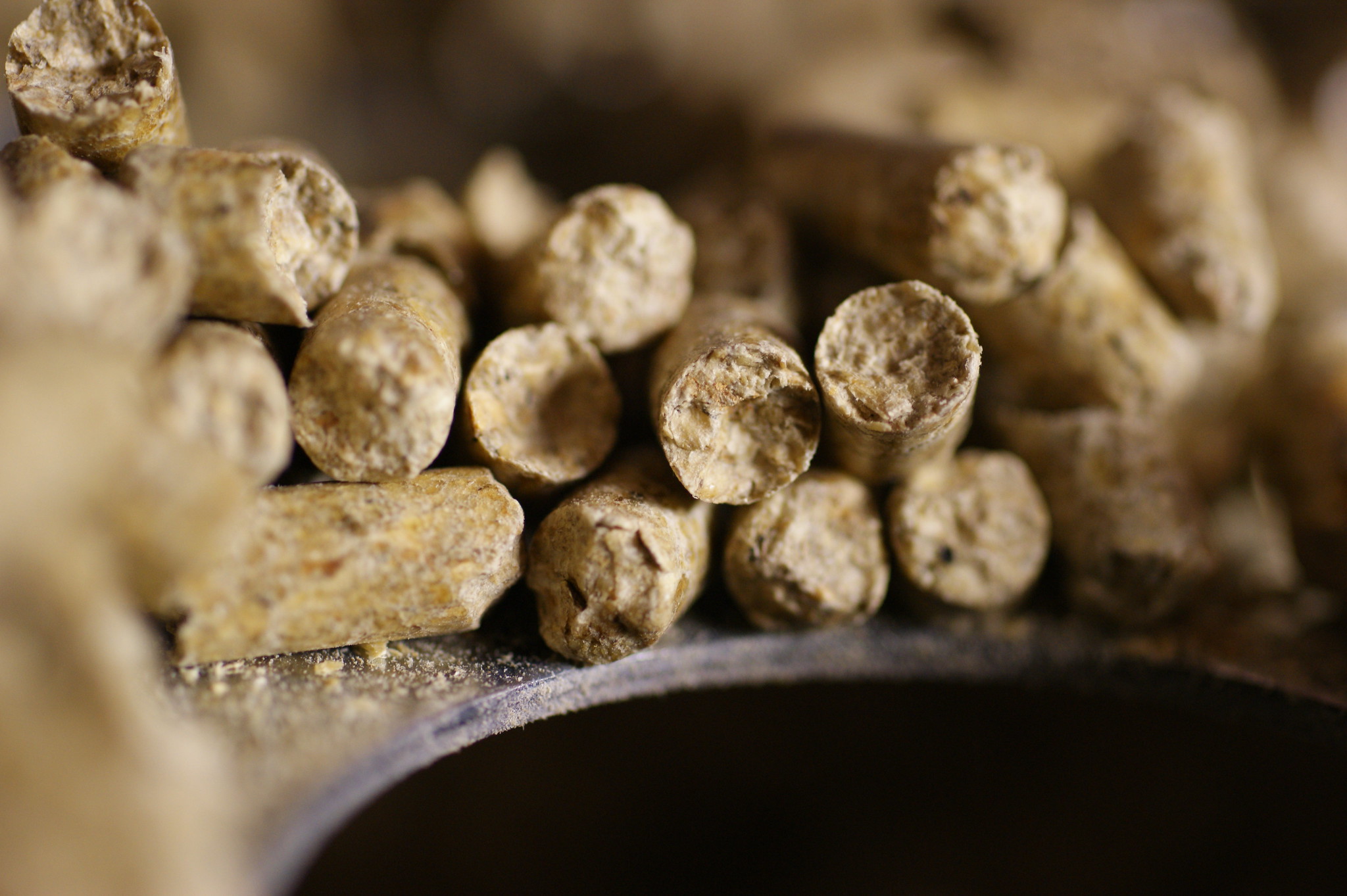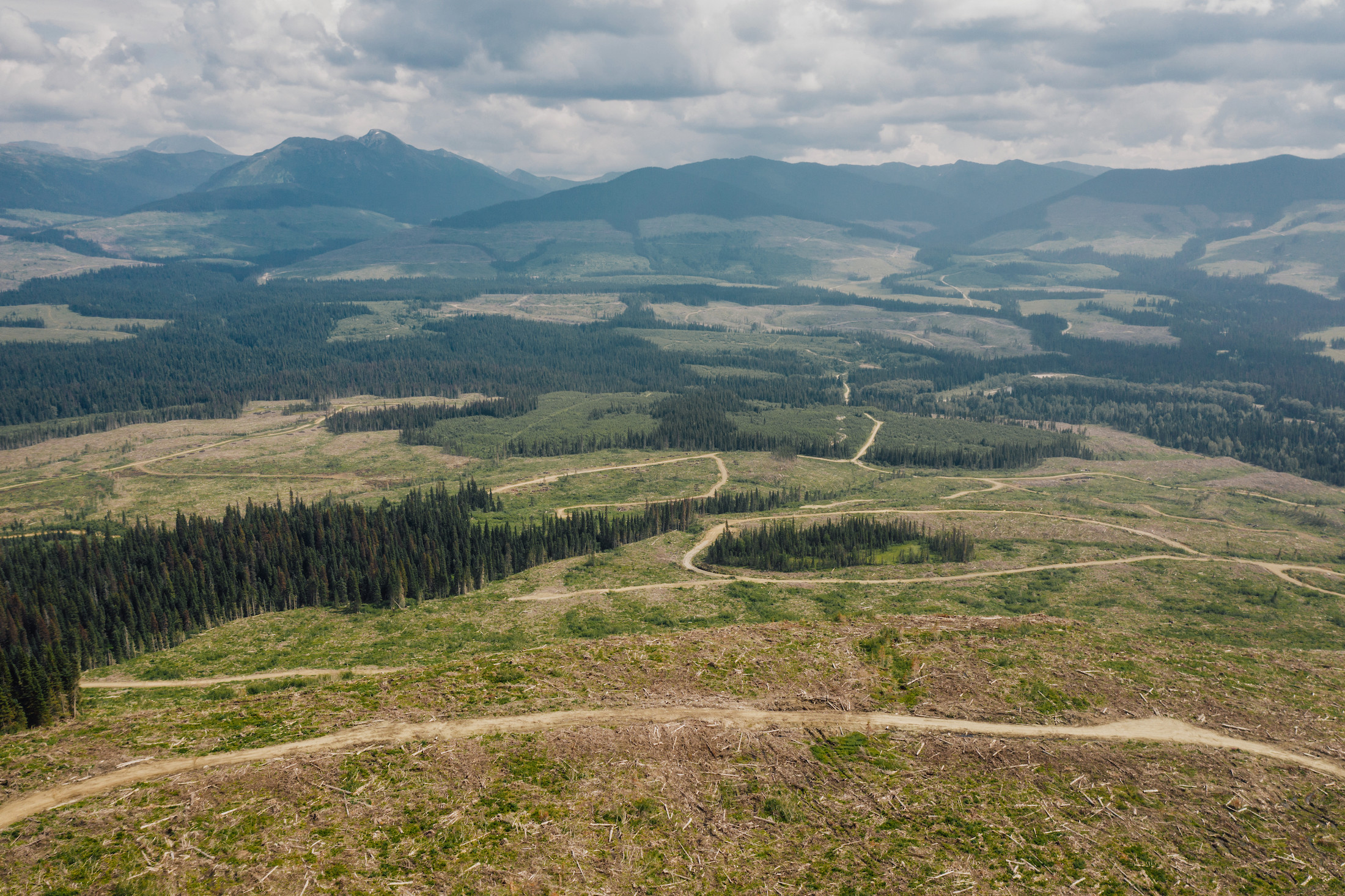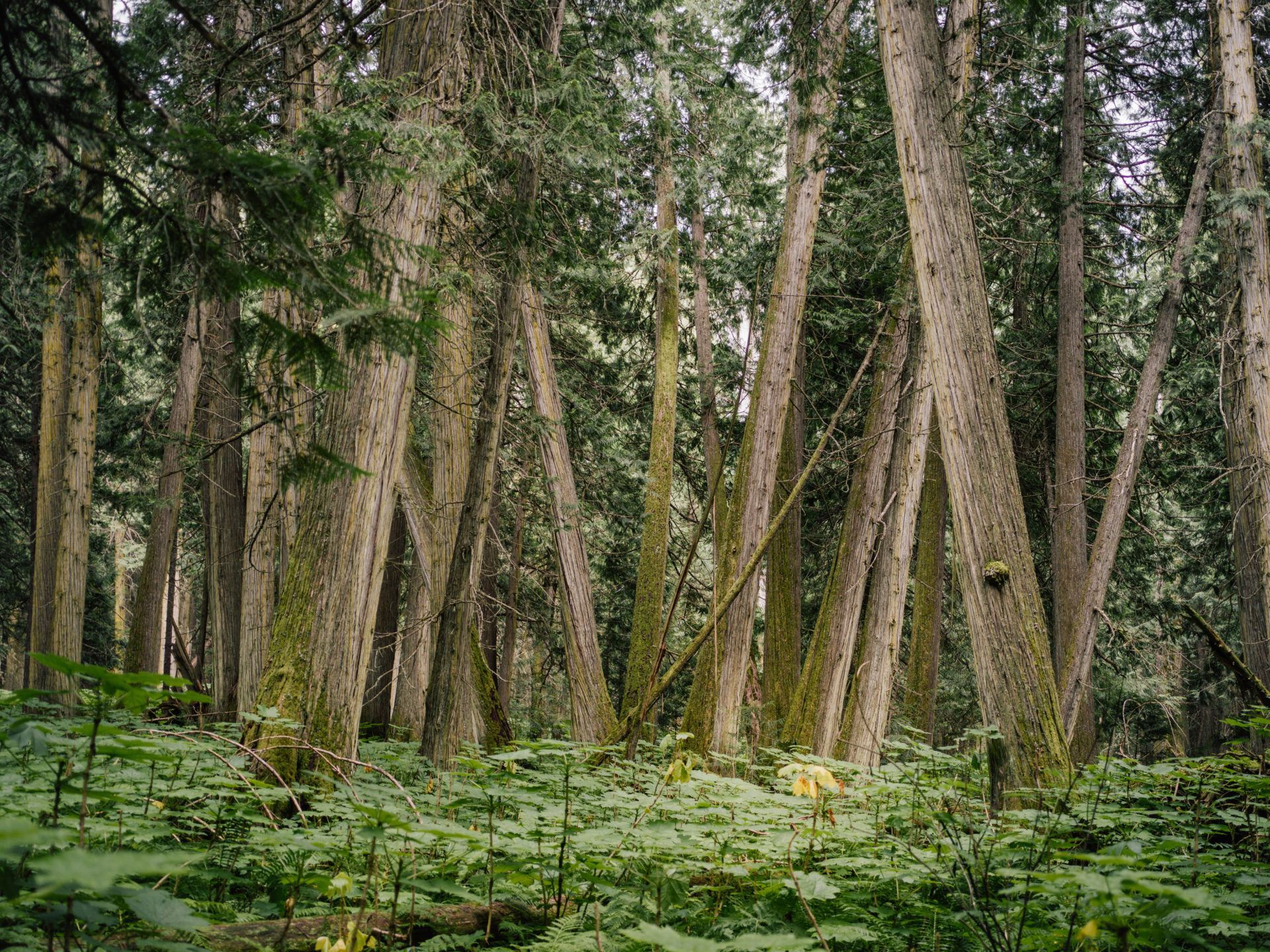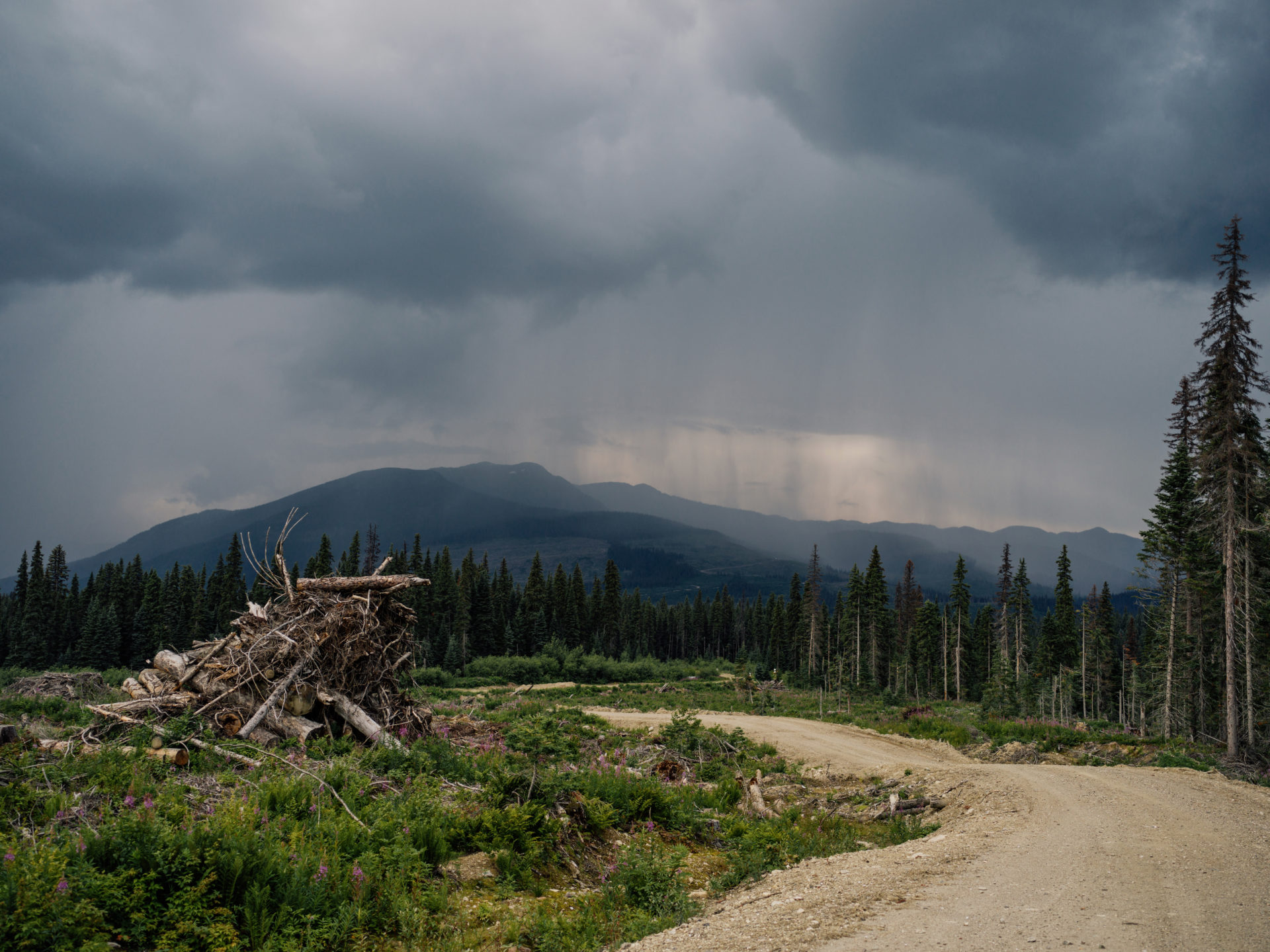
Celebrating 7 years of The Narwhal — and gearing up for the next 7
Between a fresh take on engagement and our new life on video, our team is...
“Energy really can grow on trees,” says the website of the Wood Pellet Association of Canada.
The association touts wood pellets — manufactured from sawdust, slash piles and low-grade timber from forestry harvest sites — as a way to fight climate change by replacing coal as an energy source.
“Think firewood,” the website explains to anyone curious about the elongated pellets that resemble pet rabbit food in texture and appearance.
But a new investigation claims pellets made by B.C.’s two largest wood pellet companies originate from whole trees as well as sawmill residuals and finds that burning pellets releases more greenhouse gas emissions than coal, blaming faulty carbon accounting for the industry’s climate-friendly veneer.
Some trees used for pellets, including mature Western red cedars, likely come from logging operations in the province’s rare inland temperate rainforest which provides critical habitat for endangered caribou and other at-risk species, according to the investigation by Stand.earth, released Thursday.
“The growth of wood pellet exports in B.C. represent a huge threat to our forests,” Stand.earth forest campaigner Tegan Hansen told The Narwhal.
“We’re selling our forests, under the guise of a renewable energy project, overseas.”
B.C.’s wood pellet industry has grown dramatically over the past decade, fueled by tens of millions of dollars in subsidies from the provincial and federal governments and overseas demand. B.C. is Canada’s leading exporter of wood pellets.
Last November, the B.C. government announced more than $27 million in grants “to help increase the use of wood fibre that would otherwise have been burned as slash.” Slash is a general word for waste wood generated at forestry operations.
Two grants totalling more than $1.5 million went to Pinnacle Renewable Energy Inc. for operations near Burns Lake and Vernon, a company singled out in the Stand.earth investigation.
The Pinnacle grants were announced one month after B.C. Premier John Horgan joined Pinnacle CEO Robert McCurdy and Fumiaki Miyamoto, president and CEO of Mitsui & Co. Canada, as they signed a contract that will see Pinnacle export 100,000 tonnes of industrial wood pellets to Japan for a fledgling biomass power generation plant.
“Pinnacle is creating a new export opportunity that will generate good jobs in B.C. communities, while transforming wood waste into industrial pellets to provide Japan with clean, renewable electricity,” Horgan stated in a news release. “It’s a win-win.”

B.C. is Canada’s leading exporter of wood pellets, which are shipped overseas to markets predominantly in the U.K. and Japan. Photo: Andrew Writer / Flickr
Stand.earth used photos and satellite imagery of trucks, rail cars and log piles to conclude Pinnacle is using whole logs to make pellets at its Meadowbank facility in Strathnavor, 75 kilometres south of Prince George.
Pinnacle is upgrading its Strathnavor facility, along with others in B.C., to increase production capacity — including by investing in more chippers that can process whole logs to reduce reliance on sawmill residuals, the investigation found.
The company’s wood fibre collection area includes the inland temperate rainforest east of Prince George, which provides critical habitat for endangered southern mountain caribou, according to Stand.earth.
The group also zeroed in on Pacific BioEnergy Corporation’s Prince George pellet plant, noting the company has shifted away from sawmill residuals, “due to a decrease in availability, with an increase in grinding and forest harvesting.”
Pacific BioEnergy received almost $2.2 million in B.C. government grants in 2017 and 2018 for “fibre utilization.”

Clear cuts in the Anzac River Valley north of Prince George, British Columbia. These logging operations are taking place in the critical habitat of Hart Ranges southern mountain caribou, which are highly endangered. Photo: Taylor Roades / The Narwhal
Representatives from the two companies were not available to comment, and the B.C. Ministry of Forests, Land, Natural Resource Operations and Rural Development was not able to respond to questions by publication.
Pacific BioEnergy’s fibre supply area also overlaps with caribou habitat and the inland temperate rainforest, where one-third of the province’s wood pellet industry is located, the investigation found.
A spruce beetle infestation means wood harvest is secured at “massively discounted” rates, Stand.earth said. Last year, The Narwhal reported that the science-based group Conservation North filmed thousands of spruce logs piled along forest service roads in the interior rainforest and spruce snow forests near Prince George. Three-quarters of the logs examined by the group bore no sign of beetle attack.
On February 14, 2020, Conservation North members took photos of a logging truck carrying large old Western red cedar trees entering Pacific BioEnergy’s facility in Prince George.
Pacific BioEnergy holds several forest licences, including one for 25,000 cubic metres of wood in the inland temperate rainforest, according to the investigation.
“What we had heard from folks in government was that it was primarily sawmill residuals going into wood pellets,” Hansen said.
“But in fact — and especially over the last year or two — it seems there’s been a real shift in the industry. The shift has been towards using more round wood, as the industry likes to say, or whole trees, in their pellet production.”

A grove of ancient cedar trees in B.C.’s rare inland temperate rainforest. Some cedars in this globally unique forest are estimated to be more than 1,500 years old. What little remains of the unprotected rainforest is now slated to be clear-cut. Photo: Taylor Roades / The Narwhal
The majority of B.C.’s wood pellets are sold in the United Kingdom, with Japan a distant second. Pellets are also exported to the U.S., Belgium, South Korea and the Netherlands, although in much smaller quantities.
Gary Bull, head of the forest resource management department in UBC’s forestry faculty, said he’s skeptical of claims made by Stand.earth and has seen “virtually no evidence” of a relationship between wood pellet manufacturing and the destruction of endangered species habitat.
“The vast majority of material used for wood pellets is either coming from manufacturing — that means residues from pulp mills and sawmills, and they get what’s left over. Or, to a lesser extent, they’re getting it from piles of wood that are traditionally burned because it’s a fire hazard.”
Bull said it can sometimes happen in the wood pellet supply chain that a very small percentage of whole logs are used.
“But I think it gets greatly exaggerated,” said Bull, who works both with ecologists on caribou issues and the wood pellet sector, sitting on a standards committee that is developing a new sustainability definition for the industry. He’s also working with the World Resources Institute helping to set up new guidelines for the bioenergy sector.
“I can tell you, no power utility in Europe wants to see old forests, or forests that are valuable for a whole pile of other things, like biodiversity, utilized in terms of energy production. They are very clear about that.”
Mary Booth, director of the Partnership for Policy Integrity in Massachusetts, has been tracking the global wood pellet industry since it was in its infancy one decade ago. She said the fast-growing industry is propped up by multi-billion dollar subsidies in Europe intended to help wean countries off coal.
The Drax power station in North Yorkshire, England, for instance, collects subsidies totalling about one billion dollars a year on the grounds that it is facilitating a transition to renewable energy use.
Drax was the focus of a protest on April 22 organized by the group Biofuelwatch which, because of the COVID-19 pandemic, asked supporters to put images and videos of trees online instead of demonstrating in person, according to a BBC report.
“Burning wood emits more CO2 per unit of energy than burning coal or gas or oil,” Booth, an ecosystem scientist, told The Narwhal.
A loophole in international climate agreements classifies biomass energy as carbon neutral, even if wood pellets are made with waste from logging primary forests such as the inland temperate rainforest.

Slash piles of wood waste are a common site near forestry operations in B.C. Slash piles like this can be burned or transformed into wood fibre for pellets. Burning slash piles and wood pellets both emit carbon into the atmosphere. Photo: Taylor Roades / The Narwhal
Climate agreements assume carbon is counted on the supply side, not at the smoke stack, and coal plants that convert to burning wood pellets or other biomass do not have to count their emissions.
B.C. doesn’t count many emissions from forestry, leaving a global carbon accounting gap.
“Essentially we have a double miscounting,” Hansen said. “We’re not counting emissions at the stack. We’re really not counting emissions on the land. As a result, the integrity of our ability to meet global climate targets is put in serious jeopardy.”
Booth said it’s hard to pretend that burning trees for fuel has no impact on the climate.
“They’re cutting and burning, literally, millions of tonnes of trees,” she said of the global wood pellet industry. “And they’re not instantly re-growing millions of tonnes of trees which is what it would take to instantaneously offset those emissions. So there is a net addition of CO2 to the atmosphere … ”
Bull said any carbon emissions comparison of wood pellets to coal should include a life-cycle analysis, instead of focusing on emissions at the smoke stack.
“It really all depends on the technology in the utility burning the pellets,” he said, pointing to a state-of-the-art plant in Copenhagen he visited that is burning wood pellets as a substitute for coal.
“There’s not even steam coming out of the smokestack it’s so clean. There’s no particulates, there’s virtually nothing. And that’s because the Danes have embraced very, very good technology for the burn.”
Stand.earth is calling on the B.C. government to halt subsidies for wood pellet exports and ensure wood pellet companies do not have access to forest licences or use whole trees for production.
The group is also asking for the loophole in international climate agreements that classifies biomass energy as carbon neutral to be closed.
Hansen said the wood pellet export industry would not be tenable without government subsidies and the widespread belief that it is climate-friendly.
“The viability of this industry is really reliant on masquerading as a climate solution,” she said.
Instead of using public funds to support the expansion of the wood pellet industry, including in primary forests, Hansen said the B.C. government should invest in smaller-scale local milling of second-growth forests. Governments should also subsidize low-carbon energy such as wind, solar and geothermal, along with energy efficiencies, she said.
The organization also wants to see the B.C. government protect primary, carbon-rich and other natural forests — along with endangered species habitat — in collaboration with the federal government and local and Indigenous governments.
“Maintaining older, biodiverse forests draws down carbon levels and helps buffer imperiled ecosystems against the impacts of climate change,” the group said in its report, which also noted protection of intact forests makes nearby communities more resilient to climate change impacts such as drought, floods and wildfire.
Indigenous communities are at the forefront of the community-based use of biomass energy for local heat and power needs, Stand.earth noted, pointing to the Teslin Tlingit Council’s biomass initiative in Yukon as a positive example of a project with built-in land management practices.
The group says only small-scale biomass projects should be developed, using verified wood waste and in collaboration with Indigenous governments, to support community-driven projects designed to meet local heat and power needs.
“There’s a lack of understanding of how much impact this industry has on forests. We think it’s really important that we start having these discussions now,” Hansen said.
“Unfortunately this industry, if we’re to meet our global climate goals, really has a limited shelf life.”
‘Hundreds of hectares of moonscape’: B.C. spruce beetle infestation used to accelerate clear cuts
Like what you’re reading? Sign up for The Narwhal’s free newsletter.
Get the inside scoop on The Narwhal’s environment and climate reporting by signing up for our free newsletter. On a warm September evening nearly 15...
Continue reading
Between a fresh take on engagement and our new life on video, our team is...

The public has a few days left to comment on Doug Ford’s omnibus development bill....

115 billion litres, 70 years to fix, $5.5 billion in lawsuits
